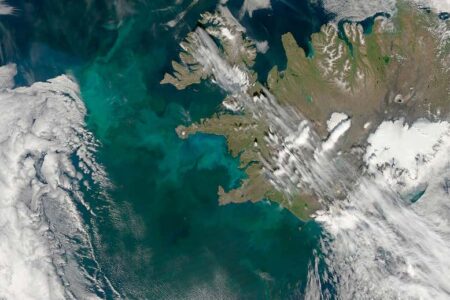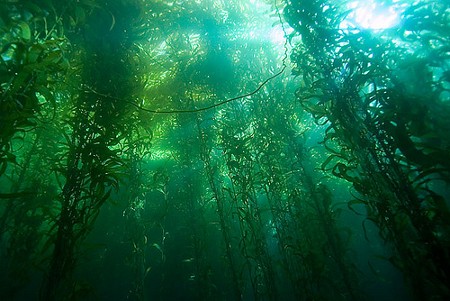Iron seeding is once more being proposed as a way to tackle climate change and restore balance to our oceans. This idea keeps coming up every few years, raised by those who believe geoengineering of the environment can help us mitigate or adapt to rising carbon emissions.
Back in July 2012, I wrote about an American businessman named Russ George who dumped 100 tons of iron sulphate off the British Columbia coast that resulted in an algae bloom 10,000 kilometres square (3,861 square miles). At the time the local chiefs of the Haida nation, an indigenous tribe living on Haida Gwaii, an island off the British Columbia coast, were advised this action would help restore local salmon populations.
It is true that in theory, geoengineering the ocean by seeding it with iron or lime on a massive scale could restore seawater alkalinity. But how much seeding, and for how long?
The oceans are the largest carbon sink on the planet. They are greater than the combined boreal and tropical rainforests. The oceans absorb 25% of atmospheric CO2 released from the burning of fossil fuels.
The more CO2 in the atmosphere the more gets absorbed into the ocean altering its chemistry. When CO2 and water mix it forms carbonic acid. Put enough of it in the ocean and the water’s pH level drops. Before CO2 levels started their upward climb at the dawn of the Industrial Revolution, ocean pH was 8.2. Today it is 8.1. That’s a cumulative result of emissions amounting to 525 billion tons of CO2 mixing with ocean water at an average rate of 22 million metric tons daily. That’s why ocean today is 30% more acidic than it was in the mid-19th century. That rate of change is unprecedented because the geological record shows that nothing like this has happened in the last 50 million years.
For marine life which relies on the chemical balance in seawater to remain pretty constant, a change in pH balance represents a threat to the entire ocean food chain. It impacts phyto and zooplankton, shellfish, crustaceans, corals, snails, and more. And at the top of the food chain from octopi and squid to fishes, whales, seabirds, seals, otters and human fishers, the acidification of the ocean has existential implications.
It’s not that marine life doesn’t have the ability to adapt to ocean chemistry changes. Life has demonstrated that ability since first appearing on the planet. But it is the timescale of the change that makes adaptation more difficult. Evolution, for the most part, works on geological timescales, not in two centuries, although as I recently wrote on this blog site, there are exceptions to this rule.
The idea of iron seeding reappeared in the last week in a revelation in NewScientist written by Adam Vaughan who noted that “A former UK chief scientific adviser is planning experiments to drop sand naturally containing iron in oceans to tackle climate change and restore marine life.”
Sir David King is the UK scientist to whom Vaughan is referring. King is at the University of Cambridge where he has served as the United Kingdom’s Special Envoy on Climate Change. He is also the founder of the Centre for Climate Repair.
The project he envisions would involves ships being sent to three ocean locations over four years to try an iron-filled sand seeding technique. The hope would be to create large kelp forests to absorb excess carbon from the ocean and permanently sequester it.
In a recent interview referring to the project, he states, “If we cover about 2% to 3% of the deep ocean surface with iron in this way we would remove about 35 billion tonnes of greenhouse gases a year.”

There is a caveat to this experiment. What happens when the kelp (which is algae) dies? Will it release CO2 back into the ocean and atmosphere? Because this will only work if the sequestration is permanent which has yet to be proven.
King acknowledges that we won’t know if it is working for at least the four years planned. As he states, “What we’ve got to do is see that as the green matter dies, it doesn’t remove all the oxygen from the water, which will obviously then cause all those wonderful fish to die.”
So it appears that Russ George’s experiment is alive again except this time not using iron sulphate, but rather sand containing a significant percentage of iron. As King describes it, the goal is to mimic what happens when winds over the Sahara Desert pick up its sand and blow it into the Atlantic Ocean causing the water to temporarily turn green from algae blooms every year.









